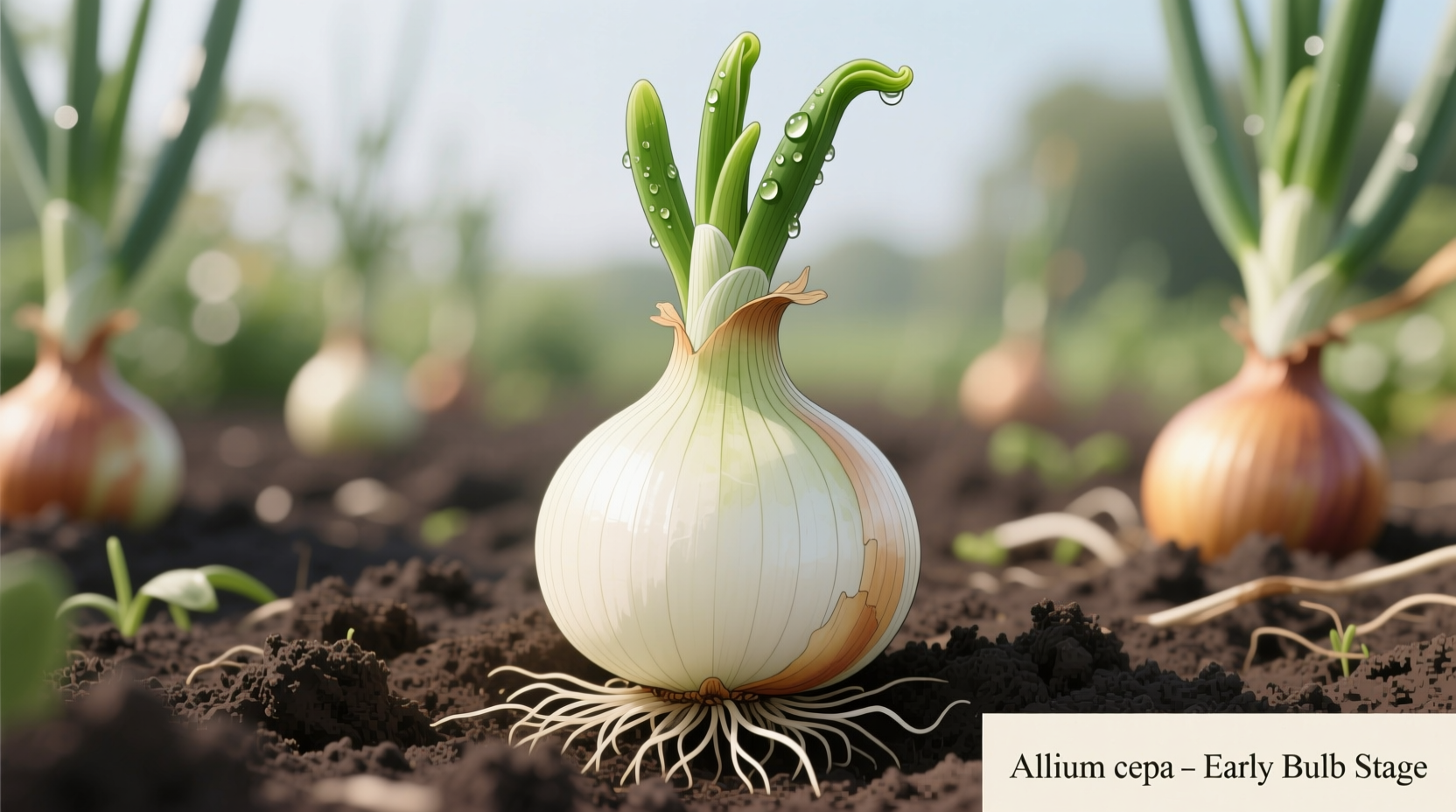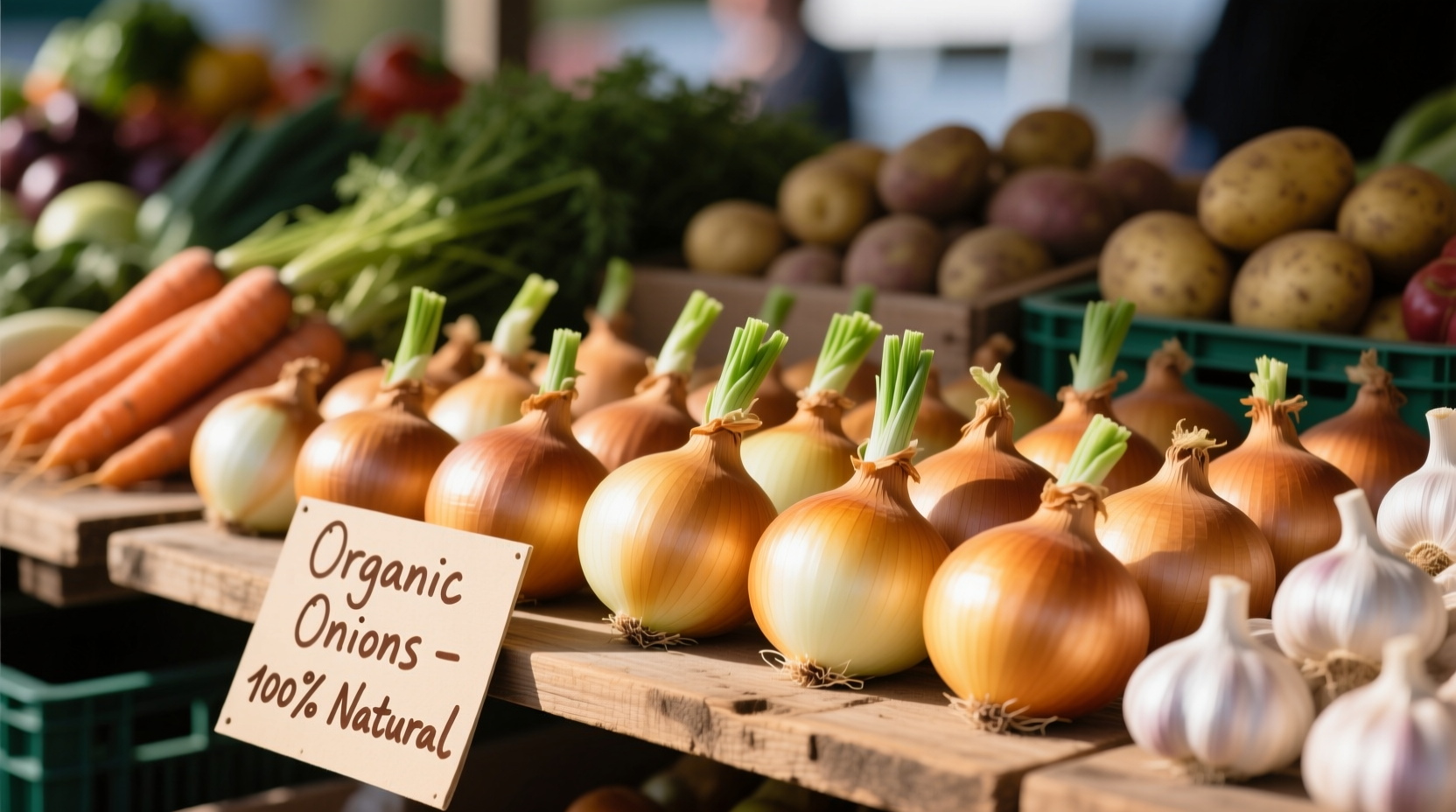Onion starts for sale typically become available from late winter through early spring, depending on your climate zone. These small onion plants or sets provide a head start for home gardeners compared to growing from seeds, with most varieties ready for harvest 90-120 days after planting.
What Are Onion Starts and Why Choose Them?
Onion starts refer to young onion plants that have been grown from seed and then harvested while still small, usually as sets (small bulbs) or transplants (young plants with roots). Unlike seeds that require 4-6 months to mature, starts give you a significant time advantage in the growing season. According to the USDA Agricultural Research Service, using onion starts can increase yield by up to 30% compared to direct seeding in many climates.
There are two primary types of onion starts available:
- Onion sets - Small, dormant bulbs (usually 1/2 to 1 inch in diameter) that are easy to plant but may bolt (prematurely flower) more readily
- Transplants - Young seedlings with green tops and established roots, offering better variety selection and reduced bolting risk
When to Purchase Onion Starts for Your Region
Timing your purchase correctly is crucial for successful onion cultivation. The optimal window for buying onion starts varies significantly by climate zone. Planting too early in cold soil can cause sets to rot, while planting too late may not allow enough growing season for proper bulb development.
| USDA Hardiness Zone | Best Purchase Window | Planting Time After Purchase |
|---|---|---|
| Zones 3-5 (Northern) | March to early April | 2-3 weeks after last frost |
| Zones 6-7 (Midwest) | February to March | Immediately after purchase |
| Zones 8-10 (Southern) | December to January | Within 1 week of purchase |
This planting timeline aligns with recommendations from the University of Georgia Cooperative Extension, which emphasizes that onion starts should be planted when soil temperatures reach at least 50°F (10°C) for optimal root development.
Selecting Quality Onion Starts
Not all onion starts are created equal. When purchasing, look for these quality indicators:
- Size matters - Choose sets that are 1/2 to 3/4 inch in diameter; larger sets are more prone to bolting
- Firmness - Squeeze gently; quality starts should feel solid without soft spots
- Color consistency - Look for uniform color appropriate to the variety (white, yellow, or red)
- Root development - For transplants, check for white, healthy-looking roots
- No sprouting - Avoid sets that have already begun to sprout before planting

Top Onion Varieties Available as Starts
Different onion varieties offer unique flavors, storage capabilities, and growing requirements. Your choice should align with your climate and intended use:
- Yellow onions (like 'Texas Super Sweet' or 'Walla Walla') - Best for general cooking, caramelizing, and long-term storage (up to 6 months)
- Red onions (such as 'Red Wing' or 'Red Baron') - Ideal for salads and fresh applications, with vibrant color but shorter storage life (2-3 months)
- White onions (including 'Candy' or 'Mild Sweet') - Perfect for Mexican cuisine and fresh salsas, with the shortest storage duration (1-2 months)
- Shallots (like 'French Gray') - More expensive but offer gourmet flavor for sauces and dressings
According to research from Oregon State University Extension, day-length requirements significantly impact onion bulb formation. Short-day varieties (10-12 hours of daylight) work best in southern regions, while long-day varieties (14-16 hours) perform better in northern climates. Choosing the right variety for your location prevents poor bulb development.
Where to Find Quality Onion Starts
You have several options for purchasing onion starts, each with advantages:
- Local garden centers - Best for immediate planting; staff can provide region-specific advice
- Cooperative extension offices - Often sell locally adapted varieties and provide planting workshops
- Online specialty growers - Offer wider variety selection but require advance ordering (typically December-January)
- Farmers markets - Good source for organic options and locally adapted varieties in early spring
When buying online, verify the seller's reputation through university extension recommendations rather than customer reviews alone. The USDA National Agricultural Library maintains a directory of reputable seed and plant suppliers that meet quality standards for home gardeners.
Proper Storage Before Planting
If you can't plant your onion starts immediately after purchase, proper storage prevents deterioration:
- Keep sets in a cool, dry location (40-50°F / 4-10°C) with good air circulation
- Store in mesh bags or open containers - never in plastic which traps moisture
- Check weekly for signs of mold or sprouting
- Transplants should be kept in a protected area with indirect light if planting is delayed
Research from Cornell University's College of Agriculture and Life Sciences shows that onion sets stored above 60°F (15°C) have a 40% higher chance of bolting when planted. Proper storage conditions maintain dormancy until planting time.
Planting and Care Tips for Success
Follow these evidence-based practices for the best results with your onion starts:
- Prepare soil with ample organic matter - onions prefer loose, well-draining soil with pH 6.0-6.8
- Plant sets with the pointed end up, just below soil surface (about 1 inch deep)
- Space plants 4-6 inches apart in rows 12-18 inches apart
- Water consistently but avoid overwatering, which causes rot
- Fertilize with nitrogen-rich fertilizer every 2-3 weeks until bulbs begin forming
- Stop watering when bulbs start swelling to improve storage quality
One common mistake home gardeners make is planting onion sets too deep. The University of California Cooperative Extension emphasizes that planting deeper than 1 inch significantly reduces bulb size and increases disease risk. Shallow planting allows proper bulb expansion as the plant matures.
Avoiding Common Onion Growing Problems
Even with quality starts, gardeners often encounter these issues:
- Bolting - When onions send up flower stalks prematurely. Caused by temperature fluctuations or planting sets that are too large. Cut off flower stalks immediately to redirect energy to bulb development.
- Rotting - Usually from overwatering or poor drainage. Raised beds can help in heavy soil areas.
- Thrips damage - Tiny insects that cause silvery streaks on leaves. Control with insecticidal soap or neem oil.
- Pink root - A fungal disease causing pink discoloration. Prevent by rotating crops and using disease-resistant varieties.
According to the University of Minnesota Extension, proper crop rotation (avoiding planting onions in the same spot for 3-4 years) reduces disease pressure by up to 70%. This practice is more effective than chemical treatments for maintaining long-term soil health.
Harvesting and Storage Tips
Knowing when and how to harvest determines your onions' storage life:
- Harvest when tops naturally fall over and begin drying (usually late summer)
- Cure onions in a warm, dry, well-ventilated area for 2-3 weeks
- Store cured onions in mesh bags in a cool (32-40°F / 0-4°C), dry location
- Check monthly for spoilage and remove any soft or moldy bulbs immediately
Yellow storage onions properly cured and stored can last 6-8 months, while red and white varieties typically last 2-4 months. The USDA recommends against refrigerating whole onions, as the humidity promotes sprouting and mold development.











 浙公网安备
33010002000092号
浙公网安备
33010002000092号 浙B2-20120091-4
浙B2-20120091-4